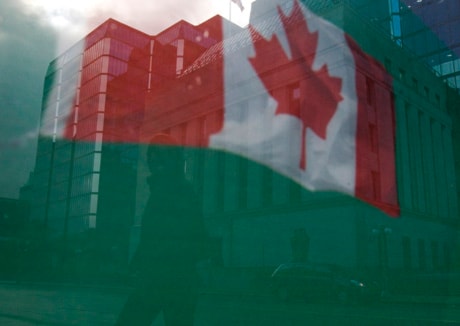OTTAWA — The loonie edged closer to parity Wednesday, stoking fears for Canadian retailers that their recent sales gains will soon be fleeing south of the border.
Bank of Montreal economist Douglas Porter says there is already anecdotal evidence that the cross-border shopping phenomenon, which had become a victim of the recession and the Canadian dollar’s tumble earlier this year, may be reviving.
“The chatter I’m hearing is there were big line-ups at the border to get back into Canada on Monday night,” he said.
The most recent data from the Statistics Canada date back to July, too removed to capture the current situation.
Porter recently compiled his summer comparison of prices between Canada and the U.S. and came up with a surprising result.
The price gap that had been as high 20 per cent in the summer of 2008, was down to 6.8 per cent a year later on his basket of goods, including a sample of eight automobiles and seven books.
On the latter two items, Porter found almost no difference once deep discounts offered by Canadian retailers were taken into account.
He also found that a tall non-fat latte at Starbucks was slightly cheaper in Canada, but chainsaws remained 25 per cent more costly, and the price of magazines were still 14 per cent higher.
The comparison of 18 goods was taken at the end of July when the Canadian dollar was valued at about 92 cents U.S., the average value for the currency over the previous two years.
But the loonie has been soaring of late and traded as high as 97.53 cents US early Wednesday morning, gaining more than a cent over Tuesday’s close, and almost six cents in the past 10 days.
Porter said that would make his basket of goods in Canada about 12 per cent more expensive than in the U.S., a gap he believes will again convince shoppers that the trip south is worth the expense and inconvenience.
That is particularly worrisome for Canadian retailers with Christmas shopping season beginning.
Although they have narrowed the gap in prices, Canadian retailers have been under the gun to keep up with the wild fluctuations in the dollar. It hit US$1.10 in the fall of 2007, then tumbled as low as 76.53 cents US in March this year, only to catch fire again.
That’s a remarkable swing in less than two years, which makes it difficult for both retailers and manufacturers to adjust.
The Canadian Manufacturers and Exporters estimates a one per cent appreciation in the value of the loonie — roughly equivalent to one cent at current levels — reduces sales by about $2 billion, equating to about 25,000 jobs.
Prime Minister Stephen Harper has also expressed concern that the loonie is rising too much, too quickly, saying it could slow the country’s economic recovery.
A strong loonie has the effect of making Canadian exports more expensive in foreign markets, depressing the ability of firms to compete.
